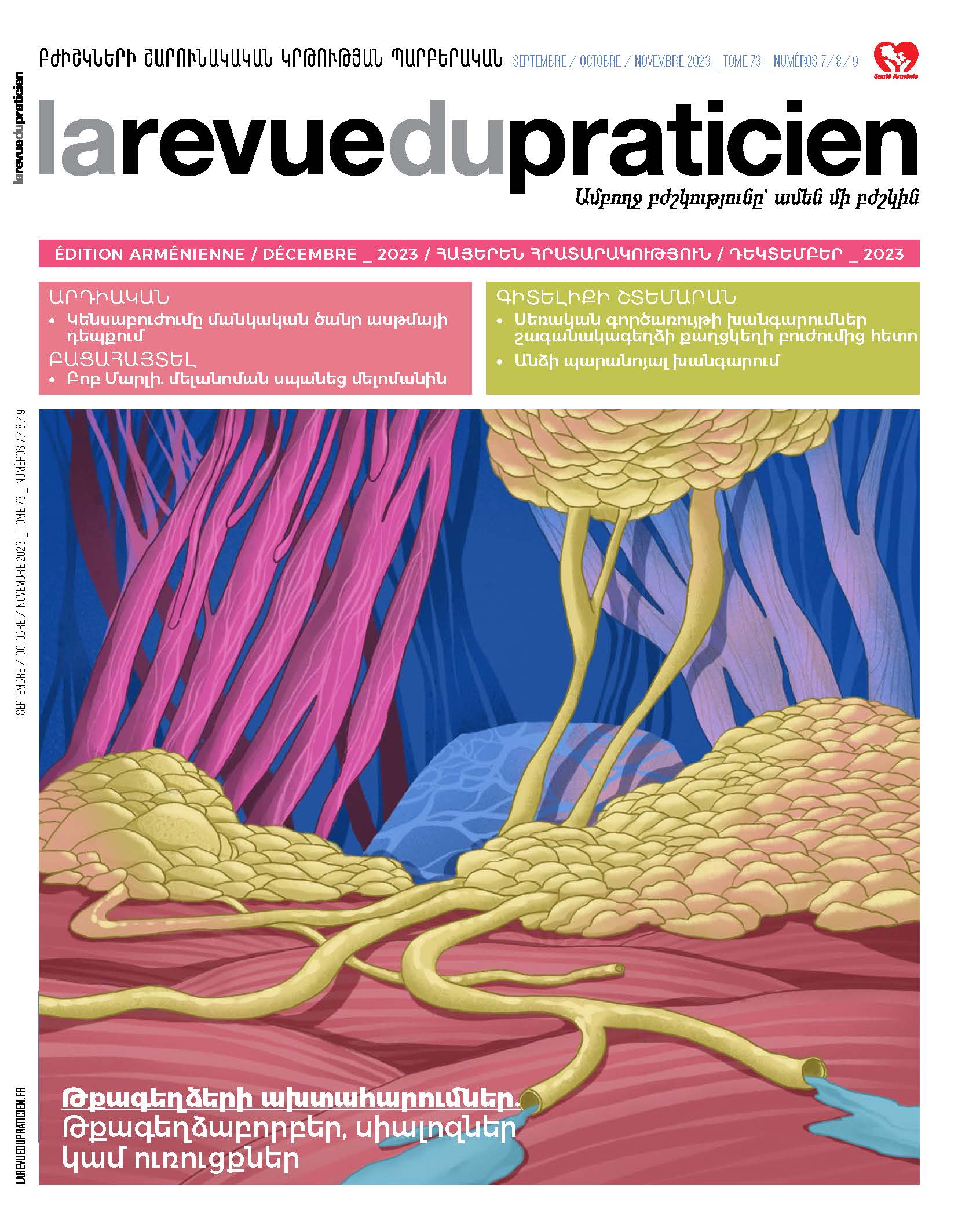Թքագեղձերի քարային ախտահարումներ 35
Domitille Camous.Ամփոփագիր
Թքագեղձերի ախտահարումներից ամենատարածվածը ծորանների քարային ախտահարումներն են (սիալոլիթիազներ)։ Դրանք առավել հաճախ հայտնաբերվում են ենթածնոտային թքագեղձերում՝ վարտոնյան ծորաններում (80%), իսկ ավելի հազվադեպ՝ հարականջային թքագեղձերում՝ ստենոնյան ծորաններում (20%)։ Ախտորոշումը կատարվում է հարցուփորձի և կլինիկական հետազոտության հիման վրա, որը կարող է հուշող նշանակություն ունենալ (թքագեղձային ճողվածք կամ խիթ, սուր թքագեղձաբորբ), նաև՝ պատկերային հետազոտության արդյունքների: ՈՒՁՀ-ն հաճախ կիրառվող ախտորոշիչ հետազոտություն է, սակայն ՀՇ-ն և թքագեղձերի ՄՌՇ-ն հնարավոր են դարձնում ավելի ճշգրիտ նախավիրահատական գնահատումը: Բուժումը գլխավորապես հիմնված է պահպանողական և նվազ միջամտական վիրաբուժական մեթոդների վրա, ինչպիսին է թքագեղձերի էնդոսկոպիան` ներբերանային հատմամբ կամ առանց դրա։ Այդ մեթոդներն արդյունավետ են 80 % դեպքերում և զգալիորեն նվազեցնում են հետվիրահատական բարդություններն ու ստացիոնար բուժման տևողությունը:
